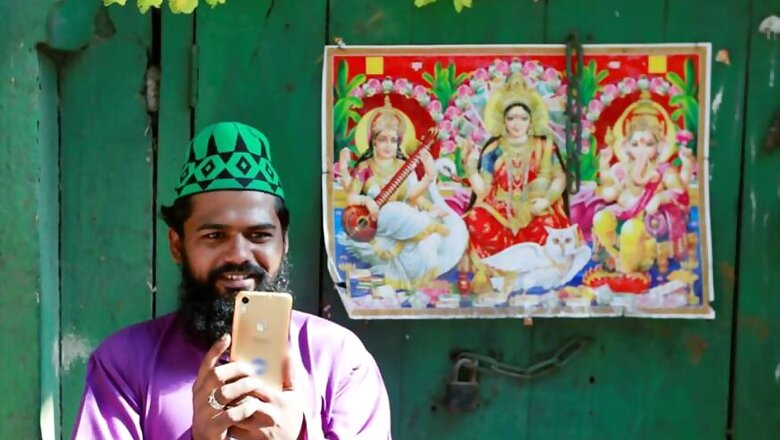
views
One year after the passing of Nobel laureate VS Naipaul for whom India was an ever-present dysfunctional country which he despised in many ways, it is time to reassess his major work.
A House for Mr Biswas and reposition it as the immortal and greatest India (maybe not Indian) novel in English that has not got its due place in the national pantheon.
Over the years, Biswas has been hit, hurt and disregarded by the Indian suspicion of the man who made no secret of his impatience with many things Indian. When Naipaul termed India 'An Area of Darkness', the rebuttal became total and with his position remaining unchanged over many other works, the repudiation only got enforced.
And finally after his death, we have very conveniently removed him for our collective conscious. We don’t refer to him anymore, nor have we made any effort to appropriate some of his literary worth. Begone, you assaulter of our national pride, you who assailed us as a “country full of pompous mediocrity”!
Now looking back at his repeated put-downs of India and his constant emphasis of India as a country with no intellectual means to move ahead, we can now wonder about his perception and prescience about the country.
Blocked at the many cross-roads which history and varied human aspirations present us with, we as a nation have had no intellectual means to surmount those apart from some old world macho, the dismal route-march of the khakhis, and the familiar gun power.
Yet and why have we forgotten A House for Mr Biswas, that family saga set in Trinidad and West Indies, that novel so familiarly Hindu and Indian in its hopelessness, dripping with irony, sarcasm and the comic? The novel is clearly a mirror to ourselves and it seems we don’t like to see the warts so prominent in our terribly diminished, dishevelled bodies.
Biswas is not just about a man’s search for identity. It is about “thwarted ambition” of his father Seepersad Naipaul (recreated as Mohun Biswas here) and his life-long search for something better.
His father felt trapped in an environment that did not allow him to flower and always hoped that at least his son would outgrow all that, which he did thanks to the beautiful and creative atmosphere at Oxford. But Seepersad and Biswas were trapped for ever. “Trapped!” Mr Biswas would say. “You and your family have got me trapped in this hole.” And later in the novel. “The world was too small, the Tulsi family too large. He felt trapped.”
Biswas explores Hinduism constantly and trenchantly. The atmosphere in the many households that Biswas gets to stay especially in Hanuman House is fully Hindu and the priest is ever-present.
There is a continuing effort by many women of the joint family to infuse Hinduism and its many practices and the accompanying superstition. Though far away from the Hindu country from where they came, all of them hold on dearly to the values the religion espouses and works to live by its canons.
If it’s Hinduism, then there has to be Hindi and often Hindi intrudes into the West Indian creole. There is also an ongoing struggle between Hindi and the local English, just as there is a struggle to emphasise Hinduism amid all the overwhelming distractions of Trinidad’s Christianity with pictures of Jesus and Mary everywhere, as if the intrusion of English wasn’t enough.
Biswas was also taught to tell the Lord’s prayer in Hindi from the King George V Hindi Reader. Worse, Hanuman House was subjected to a propaganda of a little-known Christian sect. The cynical Biswas then says “to be a good Hindu you must be a good Roman Catholic first.”
Ghany was the local Muslim lawyer who had to give them Biswas birth certificate. The Hindu-Muslim disconnect and distrust so widely seen in today’s India is obvious in Naipaul’s Trinidad too where he has placed the India of his imagination. “Ghany made most of his money from Hindus, but as a Muslim, distrusted them.” How many Indian novelists have written such a line about so familiar situations in India?
In the dysfunctional Hanuman house with various relatives and impending pauperdom the constant subject of debate, the women and children are constantly thrashed and whipped, the women by their husbands and the children by their mothers.
The children had to cut and bring the switches (branches) and then offer their backsides to be thrashed. The women considered it a very Hindu, proud thing to be whipped and they took the pain and humiliation as a divine calling and rushed to the kitchen to make tea for the thrasher.
After one such round of thrashing of a little boy for apparently breaking soda bottles Biswas is as cynical: “Is just a form of showing off. He had seen enough of these beatings to know that later it would be said admiringly: "Sumati beats her children really well".
Ambition and the need for a job are also constant concerns in Biswas. In one enthralling para, Naipaul brings this universal dilemma home to us. Biswas starting out on life’s journey is the story of everyone. And so wonderfully comic.
“How did one look for a job? He supposed that one looked. He walked up and down Main Road, looking. He passed a tailor and tried to picture himself cutting khaki cloth, tacking and operating a sewing machine. He passed a barber and tried to picture himself stropping a razor... He thought how it would disgust Pundit Jairam to learn that his former pupil had taken up barbering, a profession immemorially low. He walked on.” How memorably Indian this dilemma is, where even jobs have to be constantly measured on the Hindu and moral scale.
Ultimately Biswas’s is a quest for permanence. And for that we journey all our lives. The longing and yearning of Biswas is universal. So we all want to avoid “to have lived without even attempting to lay claim to one’s portion of the earth; to have lived and died as one had been born, unnecessary and unaccommodated”.
Whichever way we look at it Biswas is timeless and so completely a reflection of Indian dilemmas. There is so much to learn of nationhood, religion and human frailties that we are accosted with everyday. It is time for Biswas to be allowed reentry into the Indian imagination. And given a central position among English novels that Midnight’s Children holds.
(The author is a senior journalist. Views expressed are personal)




















Comments
0 comment